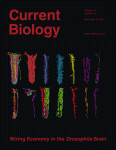
研究表明在家庭中受虐待儿童的大脑结构会发生改变,类似于参战士兵的大脑
英国伦敦学院大学(University College London)的一个心理学家团队最近研究成果"Heightened neural reactivity to threat in child victims of family violence"表明,在家庭暴力中成长的儿童会因受到打击而导致其大脑结构发生改变,类似于参加过战争的士兵的大脑。童年的阴影会影响他们成年后的心理健康,该研究报告发表在最新一期的《当代生物学》杂志上。
研究人员发现,在家庭中经常受到虐待的孩子比其他孩子更容易察觉到威胁,以及预感到疼痛。这种警觉性在恶劣环境中可能会对他们有所帮助,但会导致长期的紧张和焦虑感。此项目的领导者、伦敦学院大学的心理学家埃蒙·麦克瑞(Eamon McCrory )说,“这使他们能够快速地做出反应,以尽量避免危险。然而,长期处于不安的状态容易引发焦虑症。”
麦克瑞的研究小组利用功能磁共振成像技术(functional magnetic resonance imaging,简称fMRI)测试43个受虐待儿童在看着悲伤或愤怒面孔的照片时的大脑血流量。再将这些受虐待儿童的fMRIs与23个条件相同,但没有受虐待经历的儿童的fMRIs进行比较。结果表明,对于受虐待的儿童,愤怒的面孔激活了他们的前脑岛和右侧杏仁核(处理威胁和疼痛过程的大脑部分),类似的现象在参战士兵的大脑内也能看见。
以往的研究表明,虐待会影响孩子的大脑,他们长大后会有暴力倾向,容易产生焦虑、抑郁和其它行为问题。麦克瑞的新研究是首次使用功能磁共振成像技术研究虐待如何造成了大脑的变化。麦克瑞说:“理解神经机制的变化可能为我们提供‘经历塑造一个人的未来’的线索。”
另一项最新研究发现,那些在童年时期受过虐待的人的抑郁症特别难以治疗。麦克瑞希望今后的工作将能够更全面的了解虐待儿童对其神经系统的影响,并计划采用干预措施帮助儿童走出抑郁的阴霾。麦克瑞说:“孩子会因为干预行为而改变吗?为孩子创造一个更美好的家庭环境?这就是我们需要测试的东西。”

 Heightened neural reactivity to threat in child victims of family violence
Heightened neural reactivity to threat in child victims of family violence
Eamon J. McCrory, Stéphane A. De Brito, Catherine L. Sebastian, Andrea Mechelli, Geoffrey Bird, Phillip A. Kelly1, and Essi Viding
Exposure to family violence affects a significant minority of children: estimates of physical abuse range from 4 to 16%, while intimate partner violence affects between 8 and 25% of children. These maltreatment experiences represent a form of environmental stress that significantly increases risk of later psychopathology, including anxiety. To date, no functional magnetic resonance imaging (fMRI) studies have probed the neural correlates of emotional processing in children exposed to family violence. Previous psychological and electrophysiological studies indicate a selective hypervigilance to angry cues in physically abused children, which is in turn associated with elevated levels of anxiety. Functional magnetic resonance imaging (fMRI) research has demonstrated increased reactivity of the anterior insula (AI) and amygdala to angry faces in individuals with anxiety disorder, and in psychiatrically healthy soldiers exposed to combat, making these regions plausible neural candidates for adaptation to threat. We demonstrated that children exposed to family violence (with normative levels of anxiety) show increased AI and amygdala reactivity in response to angry but not sad faces. While such enhanced reactivity to a biologically salient threat cue may represent an adaptive response to sustained environmental danger, it may also constitute a latent neurobiological risk factor increasing vulnerability to psychopathology.
文献链接:https://www.cell.com/current-biology/abstract/S0960-9822(11)01139-0







